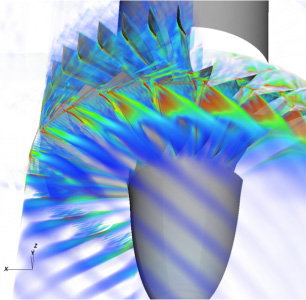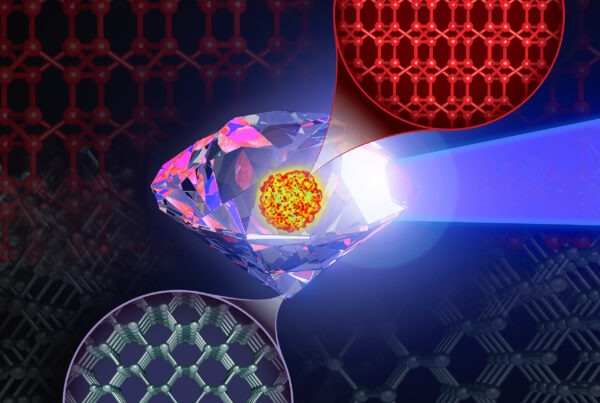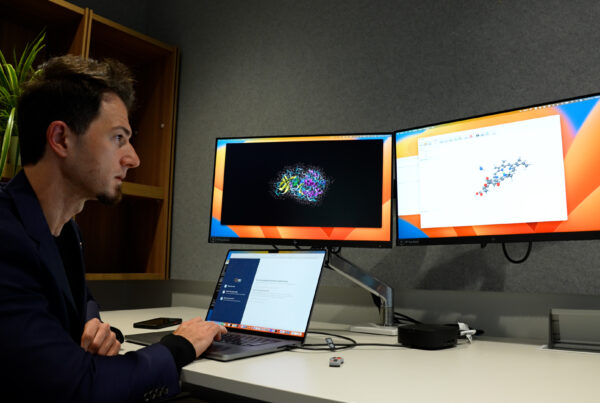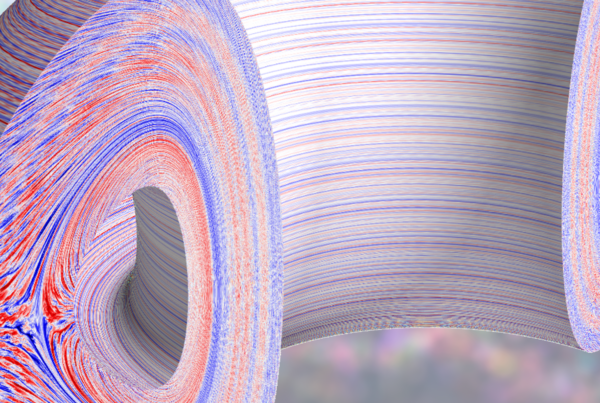OLCF successfully completes its 2012–2013 ALCC campaign
The Oak Ridge Leadership Computing Facility (OLCF) delivered more than 374 million supercomputer core hours to 17 projects through the Department of Energy’s (DOE’s) Office of Advanced Scientific Computing Research (ASCR) Leadership Computing Challenges (ALCC)—76 million hours more than expected.
Beginning in July 2012 and ending in October of this year, ASCR’s allocation program was designed to supply time on supercomputers for projects of special interest to DOE, with emphasis on high-risk, high-reward simulations. It was open to research scientists in industry, academia, and national laboratories.
In the past year these projects had access to the OLCF’s Titan supercomputer—a machine capable of 27,000 trillion calculations per second.
“With the addition of Titan to the OLCF, this was the first time that our ALCC projects could utilize GPUs,” said OLCF Director of Science Jack Wells. “This meant that our ALCC projects were often very aggressive in adopting our new technologies. For example, since Titan’s GPUs have been available to users, 42 percent of service units consumed by these ALCC projects have been consumed by jobs using the GPUs.”
By combining GPUs and CPUs in the same system, Titan tackled many projects that could not be attempted at any other facility.
Creating new material applications
In 2008 Thomas Maier was on the team that won the prestigious Gordon Bell Prize — an award that recognizes outstanding achievement in high-performance computing (HPC) applications — with a petaflop simulation of disorder effects on the transition temperature of high-temperature copper-based superconducting materials.
This year Maier and colleagues used more than 58 million Titan core hours to further understand and predict the behavior of these materials by conducting the first-ever systematic simulation studying the mechanisms that lead copper-based materials to superconductivity. By studying these mechanisms he hopes to discover new compounds that scientists can use to revolutionize many technologies, from efficient, green power transmission, power generation, and grid technology to medical applications and high-speed levitating trains.
Reducing carbon emissions
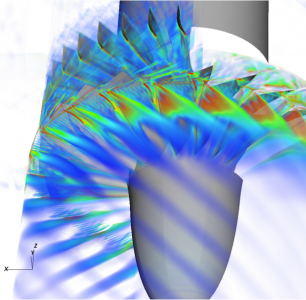
Ramgen Power Systems is simulating equipment that will achieve carbon sequestration at a significantly lower cost than that offered by conventional equipment. This image is the high-resolution simulation of turbomachinery. Visualization by Mike Matheson, ORNL.
Finding a cost-effective way to reduce carbon dioxide emissions is extremely important to DOE. To aid the process the agency is sponsoring large-scale demonstration projects of carbon capture and sequestration (CCS).
Using more than 71 million Titan core hours, Allan Grosvenor of Ramgen Power Systems, a small research and development company located in the Seattle area, conducted research to develop shock wave-based compression systems to meet DOE goals of reducing the cost of CCS and enabling high-efficiency electricity generation.
The technology pioneered by Ramgen represents a dramatic breakthrough in turbomachinery and is funded in part by DOE’s National Energy Technology Laboratory.
With the massive scale of Ramgen’s computational fluid dynamics simulations run on Titan, the company is able to accelerate its technology development. By first testing prototypes computationally, Grosvenor is able to save Ramgen and DOE extensive time and money.
For an article giving more information on Ramgen’s shock wave compression project, visit https://www.olcf.ornl.gov/2012/08/14/ramgen-simulates-shock-waves-makes-shock-waves-across-energy-spectrum/.
Harnessing the power of the sun
The world’s oil resources are predicted to run out in fewer than 50 years if production is to meet the projected rise in energy consumption. In addition, concerns over the greenhouse effect are leading policy makers to emphasize carbon-free energy sources to avoid possible environmental disasters.
Enter fusion. Specifically, thermonuclear plasma in a donut-shaped magnetic confinement reactor known as a tokamak is a potentially important source of carbon-free energy. To test its feasibility for commercial power production, researchers are building a working fusion laboratory known as ITER in France.
In separate ALCC projects, C.S. Chang of Princeton Plasma Physics Laboratory and Zhihong Lin of the University of California’s Department of Physics and Astronomy used Titan’s HPC abilities to perform research for the ITER fusion reactor.
Using more than 35 million Titan core hours, Chang performed simulations to understand how tokamak plasma can generate intrinsic toroidal rotation—the donut-shaped rotation required to stabilize the plasma—without an external momentum source.
In experiments such a source, a neutral beam injection, for example, has been observed to cause this kind of rotation. However, in ITER, which has plasmas of much greater mass and pressure, an external momentum input by neutral beam becomes negligible. That means a new toroidal rotation method must be developed to stabilize plasmas.
Using Titan’s GPUs
While Chang is running simulations to understand the methods required to sustain ITER plasmas, Lin is running simulations to build the predictive capability of energetic particle turbulence and transport in the plasma.
Turbulence and transport models are some of the hardest to effectively simulate, requiring complex codes that can run on only HPC systems like Titan.
With almost 31 million Titan core hours to tackle the complexities of this system, Lin extended the capability of the original gyrokinetic toroidal code, a three-dimensional code used to study microturbulence in a tokamak. Initial tests found speeds three times faster than the original, allowing for more critical research to be performed in less time—a feat that could only be achieved using the combined GPU and CPU power of Titan. —by Austin Koenig
More information
For the complete list of OLCF ALCC projects, visit https://www.olcf.ornl.gov/leadership-science/project-archives/2012-alcc-projects/.
For the complete list of the 2012 ALCC projects with a description for each, visit https://science.energy.gov/~/media/ascr/pdf/facilities/2012ALCCFactsheets.pdf.


